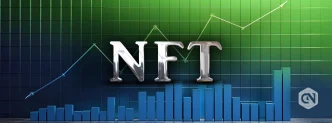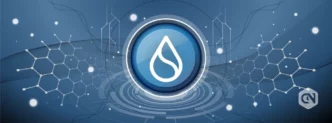The non-fungible token (NFT) fever is at its peak. As prominent market players, including influencers, musicians, artists, even mainstream businesses, entered the NFT scene, minting their own NFTs across different verticals, the market capitalization and annual sales volume within this new cryptoverse sector soared.
While NFTs have been around for some time, 2021 has been a breakthrough year for this innovative concept. The sales trajectory reflects this meteoric growth, reaching $2.5 billion during the first half of 2021 compared to the $41 million total in 2018. The NFT sector’s momentum has been so mind blowing that the back half of the year experienced exponential growth, with sales for 2021 topping $22 billion, according to data collected by DappRadar.
NFTs Have Been Shackled For Too Long
Even though NFTs may be valuable, mainly depending on their rarity and demand, the NFT ecosystem doesn’t have much to offer to consumers, especially in terms of passive income. Unlike DeFi initiatives like staking, yield farming, lending, and borrowing, NFTs can’t be used to generate a stable income. However, the current NFT market is speculative, mostly tied to aesthetic and sentimental values. This makes it difficult for users to gauge if it’s actually worth the long-term investment.
Basically, if you own an NFT, the only way to make money out of it is by listing it in a marketplace, paying the required fee, and then waiting for someone to procure it. If no buyers appear, the NFT will sit idly in your wallet. Ideally, NFTs harbor great potential to serve a wide range of use cases, but they were mostly limited to digital art and collectibles.
The Evolution Of NFTs From Art And Collectibles
A year ago, NFTs were mostly “potential ideas” – reflecting views that few outside the cryptoverse took seriously. However, the speed at which NFTs conquered the internet has quickly changed this dated perspective, positioning NFTs among the most sought-after items in 2021. The evolution of NFTs has already begun, with several promising projects introducing unique uses for NFTs.
Advertisement
2021 stands witness to several promising projects that added new verticals to NFTs. From tokenizing real-world assets, applying NFTs to in-game items, and opening the option to access funding and yields using NFTs, promising projects add more value to NFTs, helping this growing asset class experience significant mainstream adoption.
The Novel Use Cases Of NFTs
For the most part, NFTs have been used as a “certificate of authenticity” for digital artwork. But their use cases are evolving rapidly. Other than the increasingly broad spectrum of NFTs like financial NFTs, fractional NFTs, and more, an array of valuable use cases have been unlocked.
Recently, a new range of location-based NFTs has been introduced. These tokens certify digital ownership and are also geographically linked to the original artwork. Several art galleries, museums, and artists are already using this to attract more users.
The fashion and wearables industry is also warming up to the idea of NFTs. Mainstream brands are frequently dropping their NFTs. Likewise, the sports industry, too, is making the most of NFTs. Leading football clubs, sports personalities, and teams are leveraging NFTs to expand their audience and reach.
Blockchain gaming is another emerging niche where NFTs have found a prominent use. Free-to-play games like The Sandbox, Axie Infinity, Decentraland, Splinterlands, and others have made it possible for players to exert full ownership over in-game assets (NFTs) and buy, sell, and trade them across secondary marketplaces. Moreover, the metaverse is growing concurrently, meaning that NFTs will support more use cases in the coming weeks and months.
Taking the concept of tradable NFTs a notch higher is DeFi NFTs. This newly introduced use case for NFT is probably the biggest changer that will shape the future of NFTs as the cryptoverse prepares for the dawn of DeFi 2.0. Up until now, NFTs could only be traded, bought, or sold in open marketplaces. The avenues for recouping NFT investments were strictly limited to these options.
Advertisement
Fortunately, platforms like Drops support a new world of opportunities for NFT holders to put their assets to work. By merging NFTs with DeFi, Drops has opened a uniquely untapped market for the taking. Imagine a scenario where you need funds immediately but don’t have collateral. Well, if you own an NFT, Drops allows you to use it as collateral to access funding. Furthermore, you can add the NFTs that are idly sitting in your wallet to the platform’s lending pools and earn returns and rewards in exchange.
Although still in the early stages, many unique NFT use cases are yet to be unlocked as the technology evolves, with third-generation blockchain platforms likely to play an outsized role in the accompanying innovation. Accordingly, it is no overstatement to claim that NFTs will play a critical role in shaping the crypto ecosystem over the coming years as adoption trends support greater mainstream involvement.







